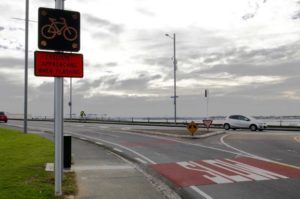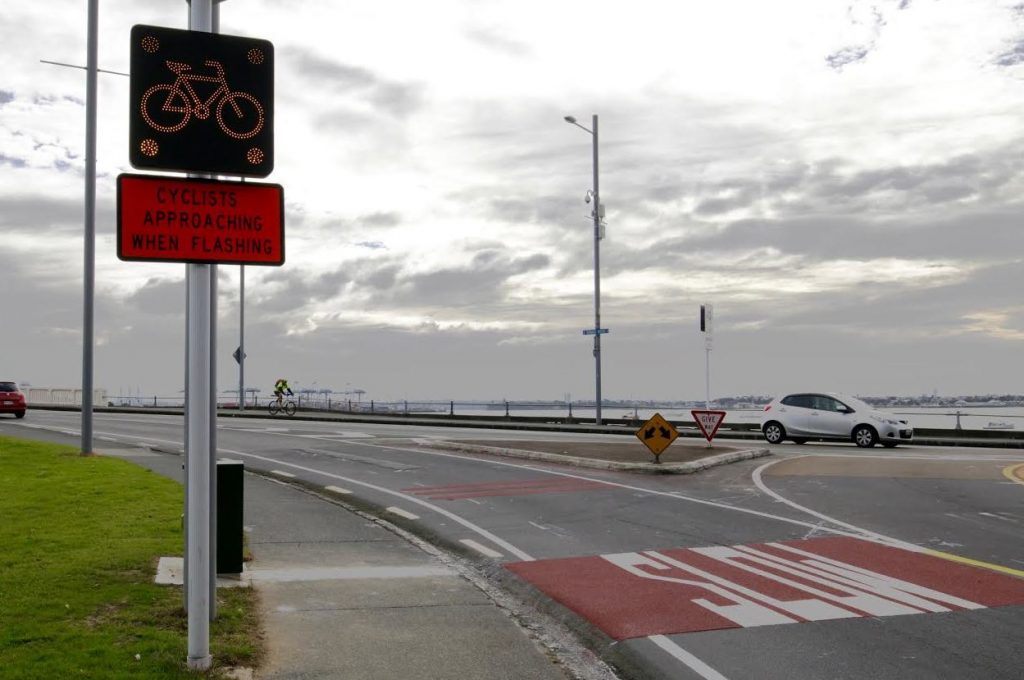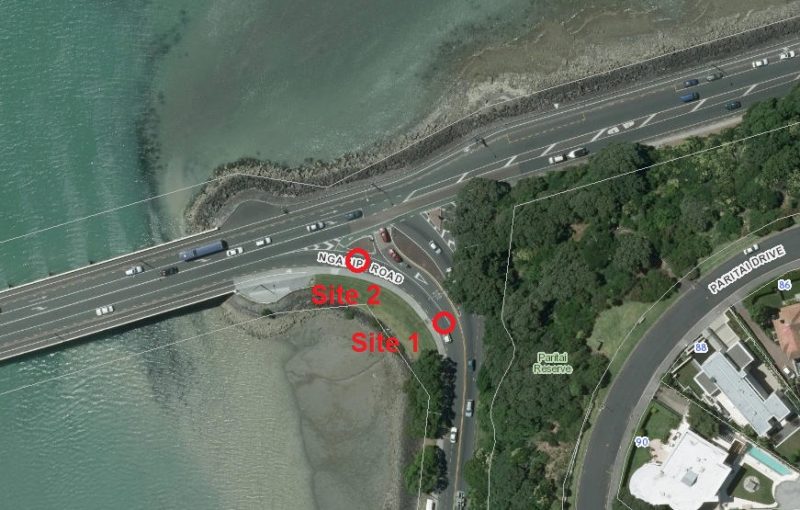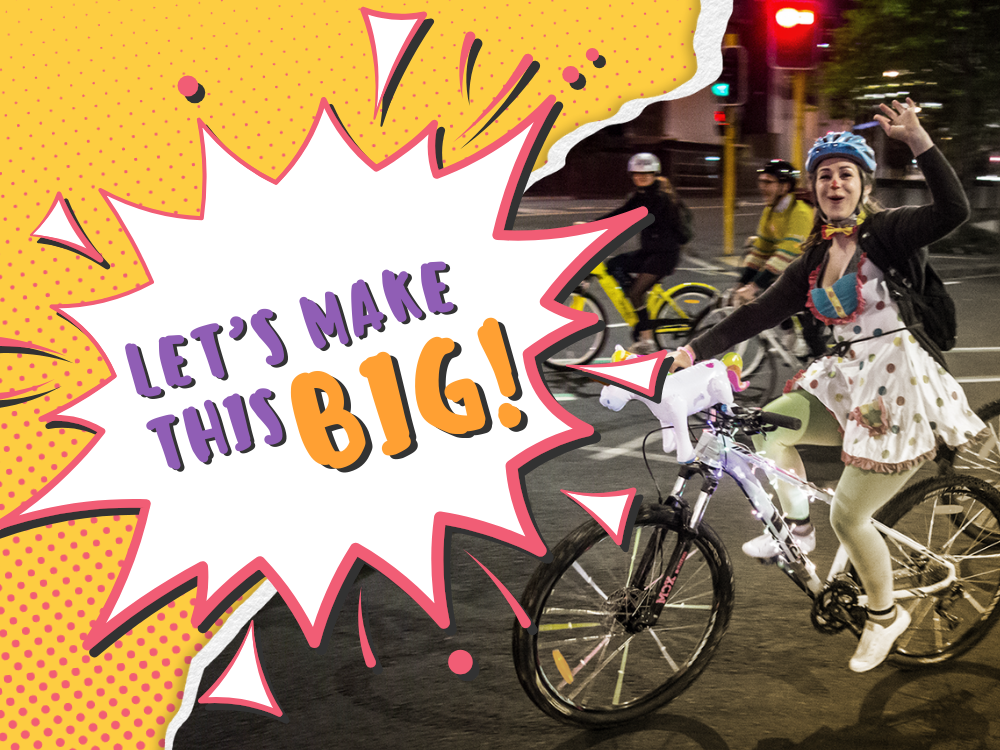
A few months ago, we made a video showing how bad things were for people on bikes at the Ngapipi Road slip lane onto Tamaki Drive.
We also described interim safety measures Auckland Transport was planning – road markings, rumble strips, specially triggered electronic signs and flashing light studs on the road.
As part of this project, AT undertook before-and-after speed measurements to see whether the interim fixes worked.
And did they?
Yes – to a degree.
Speed was measured at two locations. Site 1 was on the approach to the intersection, some 40-50m away. Site 2 was in the area where citybound cyclists have to merge with (or ride across) traffic coming out of Ngapipi Rd – i.e. the really dicey part, as featured in our video.
As you can see from the tables below (click to enlarge), there wasn’t much change in vehicle speeds near Site 1.
But near Site 2, i.e. the major conflict zone, speeds have definitely dropped. The 85th percentile speed (i.e. the point at which only 15% of all drivers are going faster) fell from 43.2 km/h to 37.3 km/h.
Even though this is ‘only’ a drop of ~6 km/h, we know that small reductions in collision speeds make a really big difference in the likelihood of someone getting seriously hurt or killed (see our Vision Zero article for a diagram). So this is good news.
The number of drivers exceeding the posted 50km/h speed limit has also significantly dropped, from 775 cases in the period before the changes, to 25 in the period afterwards. Also note that after the interim fixes, no drivers were tracked going more than 70km/h around that bend. (It’s shocking that any did so beforehand, but good that none did afterwards.)
The flashing warning sign that says ‘Cyclists coming’ may also have played a role in slowing drivers down, although of course its effects include awareness as well as speed reduction.
Our thanks to the safety people in AT who arranged for these works while the slow fight continues for better longterm solutions.
But we’re certainly not out of the woods yet, even with these changes.
For one thing, the speeds on the slip lane are still faster than recommended in the Austroads design guidelines for a location with a zebra crossing. This is a clear sign that speeds ain’t too safe yet for people on bikes either.
And of course, until there are actual cycle facilities on the intersection (and on the nearby bridge which is essentially part of the intersection), this area will remain a problem.
AT’s longer term plans for this intersection are currently open for submissions, until 23 September. Watch this space for a blog post outlining some thoughts on that design – which has been the subject of vigorous discussion on Transportblog – and our discussions with AT on how it could be improved, plus the bigger picture of Tamaki Drive’s future.






